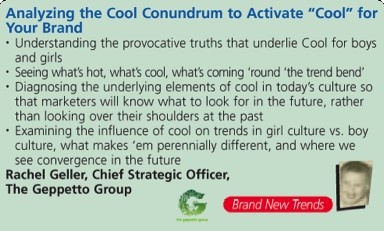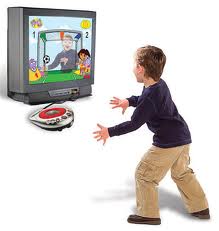Marketers expend much effort in spotting trends and often utilise children and teenagers who are identified as trendsetters in an effort to make their products and brands ‘cool’. Marketers often rely on child trendsetters to do market research for them in return for a few freebies and the flattery of having their opinions taken seriously. Children test and give feedback on products, complete surveys, take part in focus groups, email suggestions about what is ‘in’ and give extended interviews.
 In the UK, children can become ‘Dubit Informers’ by filling out online surveys for which they are paid a small amount (50p to £2), or enter a prize draw. Dubit makes an effort to make them feel special: “As a member of Informer you will be part of an exclusive group of teenagers that is given access to new ideas, new ad campaigns and new technologies – all before anyone else!!”
In the UK, children can become ‘Dubit Informers’ by filling out online surveys for which they are paid a small amount (50p to £2), or enter a prize draw. Dubit makes an effort to make them feel special: “As a member of Informer you will be part of an exclusive group of teenagers that is given access to new ideas, new ad campaigns and new technologies – all before anyone else!!”

Increasingly however, it is the companies who are defining what is cool by marketing their products to the coolest kids. Suzie McInerney, Marketing Manager of Funtastic, gave a conference paper to Kid Power 2003 in Sydney on “Staying ahead of the trends and defining what’s cool” which promised to help the audience build “on the fad momentum” and dictate “what’s cool”.
Marketers create the impression that their product is cool by giving stock to those identified by their peers as being cool, in the hope that when they wear or use it, then everyone will want it – this is variously referred to as “seeding” or “real life product placement”. Children, identified as trend setters, may even be paid to wear and be seen in a particular line of clothing. Cheerleaders have become a popular means of spreading advertising messages because they tend to be envied by other girls in high schools.
 Toy manufacturer Hasbro sought out the boys who were known amongst the children’s community to be the coolest amongst 8 to 13 year olds in Chicago and offered them free samples of its new portable game console to keep and distribute to ten friends. In this way they made sure their product was perceived as cool and therefore in demand.
Toy manufacturer Hasbro sought out the boys who were known amongst the children’s community to be the coolest amongst 8 to 13 year olds in Chicago and offered them free samples of its new portable game console to keep and distribute to ten friends. In this way they made sure their product was perceived as cool and therefore in demand.
Also people revered by children and teens as cool – rappers, artists, actors and athletes – are given free clothing and shoes to wear in order for the products to get their imprimatur as cool. A related method is to identify a sub-community of young people, such as surfers, who might adopt a brand and give it an identity others might want to adopt.
Children are not as concerned with price and rational comparisons between products as adults and are more likely to prefer brands that are in demand by their  peers. From as early as six, children are aware of what is cool and what is not and wearing cool clothes – particularly those with high status labels and logos – may be necessary not to experience social exclusion, as a study of English children between six and eleven found.
peers. From as early as six, children are aware of what is cool and what is not and wearing cool clothes – particularly those with high status labels and logos – may be necessary not to experience social exclusion, as a study of English children between six and eleven found.
Because of the efforts of marketers since the 1980s children are more brand conscious than any previous generation, “particularly so when it comes to names, labels and brand symbols on the clothing they wear. Clothing has become more important to kids at an earlier age, and stature is conferred when the right brand name is on display”.
This is particularly so for tweens, a developmental stage identified by marketers as being between childhood and being a teenager, somewhere between 8 and 14 years old: “They are in a transitional stage whereby peer acceptance is paramount but parental influence is still present. They are too old for toys but too young for teenage/adult entertainment.”
Sutherland and Thompson say this age is “prime brand imprinting territory” because from age eight they “look outside the family for information, socialising and context” and they are particularly susceptible to peer pressure and want to fit in: “Brands are badges that help people belong, and kids want and need to belong”.
Marketing consultant, Martin Lindstrom, notes of children between 8 and 14, that “to have the best is much the same as being the best” and that for nearly half the world’s children of that age, “the clothes and brands they wear describe who they are and define their social status”. He says that brands “have become an integral part of the way tweens define” and express themselves, in school, at home and with their friends. They are “passionate” about brands.
Brands are also integrated into teenage culture and identity, and teens indicate which group they identify with through their choice of brands. “Once kids bought an article of branded clothing at a department store; now they buy an entire identity, a whole set of clothes by one manufacturer at that brand’s ersatz boutique. Kids become Prada girls or Old Navy chicks or Pacific Sun, a.k.a. PacSun boys…”
Children also seem to be increasingly brand conscious in other products such as toys, video games and records/cassettes. By definition cool is socially exclusive and this is often because it is expensive.